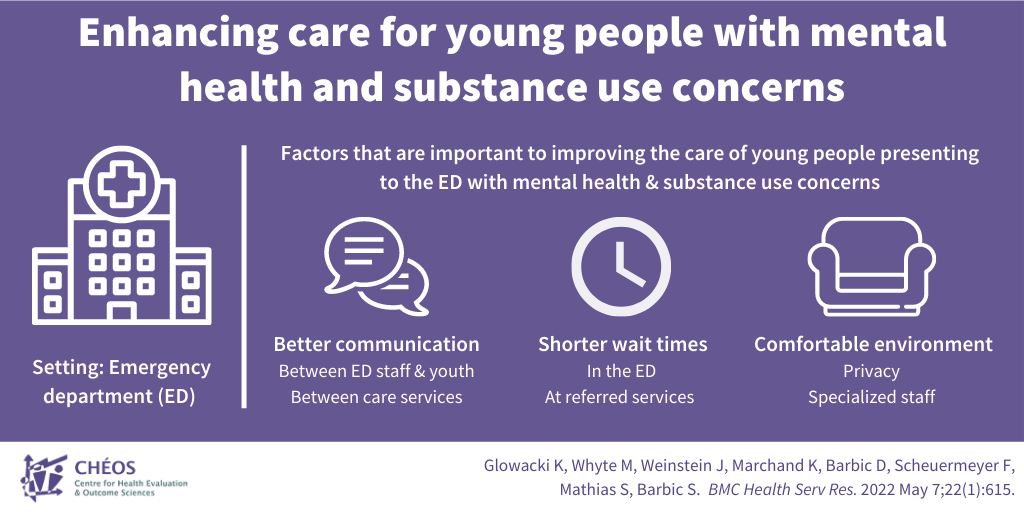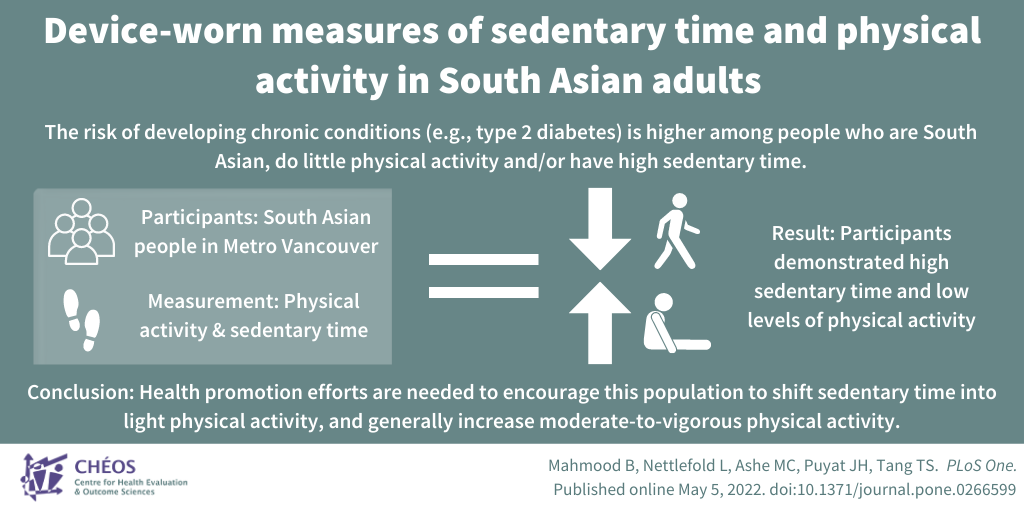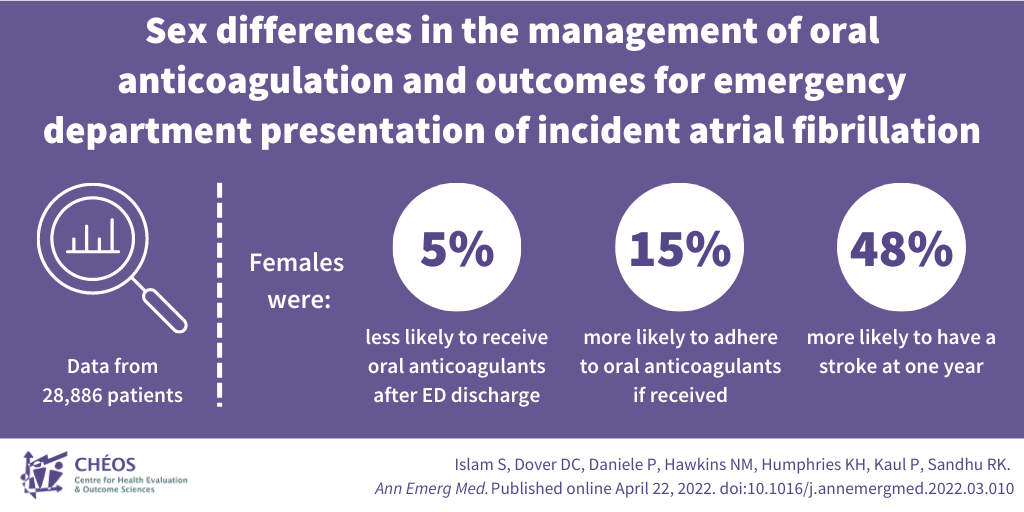The Evidence Speaks Series is a recurring feature highlighting the latest in CHÉOS research. This series features summaries of select publications and is designed to keep media and the research community up to date with CHÉOS’ current research results in the health outcomes field.
To ensure this research is quick and easy to share, we are now providing social cards that you are free to save and use as you see fit.
How can we better support young people with mental health and substance use concerns?
Glowacki K, Whyte M, Weinstein J, Marchand K, Barbic D, Scheuermeyer F, Mathias S, Barbic S. Exploring how to enhance care and pathways between the emergency department and integrated youth services for young people with mental health and substance use concerns. BMC Health Serv Res. 2022 May 7;22(1):615.
CHÉOS postdocs Drs. Krista Glowacki and Kirsten Marchand, with Scientists Drs. Skye Barbic, David Barbic, Frank Scheuermeyer, and Steven Mathias, joined colleagues from Foundry and UBC to better understand how young people presenting to the emergency department (ED) with mental health and substance use (MHSU) concerns are assessed, treated, and referred to appropriate services. Through conducting one-on-one interviews with service providers, the study team identified three main factors that are important to care: (1) adequate communication between ED staff and young people, as well as between care services; (2) shorter wait times or care packages to increase comfort if wait times are unavoidable; and (3) a better environment with appropriate MHSU assessments, more specialized staff, and a more private physical space. Overall, this study supports the need for an intervention that can be implemented in the ED to improve the care and experience for young people who have MHSU concerns.

—
Health promotion efforts are needed to encourage South Asian adults in Vancouver to increase their levels of physical activity
Mahmood B, Nettlefold L, Ashe MC, Puyat JH, Tang TS. Device-worn measures of sedentary time and physical activity in South Asian adults at high risk for type 2 diabetes in Metro-Vancouver, Canada. PLoS One. Published online May 5, 2022.
The risk of developing chronic conditions, such as Type 2 diabetes and cardiovascular disease, is higher among South Asian people living in western countries, compared with white people. This risk can be compounded by lack of physical activity and excessive sedentary time. CHÉOS Scientist Dr. Joseph Puyat, alongside fellow UBC researchers, measured physical activity and sedentary time among 91 South Asian adults using accelerometers (small motion sensors), taking socio-demographic data, such as age, into account. The results highlighted that participants had high sedentary time and low levels of physical activity. Given the already heightened risk of South Asians developing chronic conditions, these results demonstrate that health promotion efforts are needed to encourage this population to shift sedentary time into light physical activity, and generally increase moderate-to-vigorous physical activity.
 —
—
Understanding sex differences could improve care and outcomes for atrial fibrillation patients
Islam S, Dover DC, Daniele P, Hawkins NM, Humphries KH, Kaul P, Sandhu RK. Sex Differences in the Management of Oral Anticoagulation and Outcomes for Emergency Department Presentation of Incident Atrial Fibrillation. Ann Emerg Med. Published online April 22, 2022.
CHÉOS’ Drs. Nathaniel Hawkins and Karin Humphries worked with collaborators from B.C. and Alberta to understand the sex differences in oral anticoagulation management and outcomes among patients experiencing a new nonvalvular atrial fibrillation (AF) episode who present to the emergency department (ED). Analysis of data from 28,886 patients showed that females were 5 per cent less likely to receive oral anticoagulants after ED discharge than males. However, when such treatment was initiated, females were 15 per cent more likely to adhere to direct oral anticoagulants than males. The study also showed that there were no sex differences in outcomes other than stroke, which was 48 per cent more likely in females at one year compared with males. The results of this study could be used to improve care of patients following nonvalvular atrial fibrillation.




